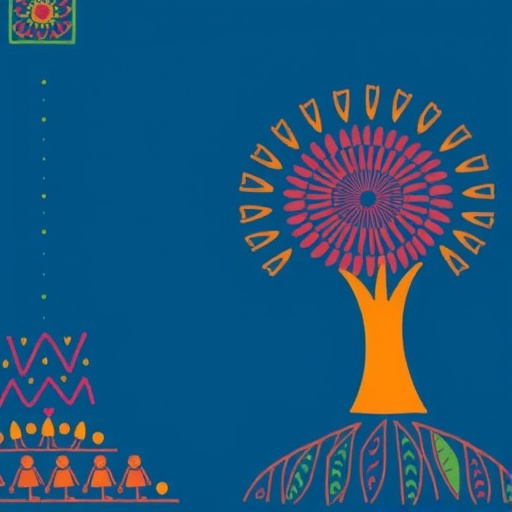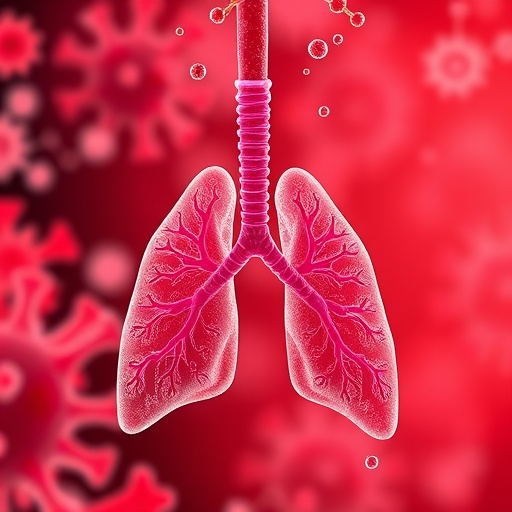NDIS Psychosocial Support for Indigenous Mental Health: Insights – Bioengineer.org

Report on NDIS Psychosocial Support for Aboriginal and Torres Strait Islander Peoples
A Review of Research by Zhou et al.
A study conducted in South East Queensland by Zhou et al. provides a critical analysis of the National Disability Insurance Scheme’s (NDIS) psychosocial support for Aboriginal and Torres Strait Islander peoples. The findings highlight significant disparities in access, utilization, and budget allocation, underscoring a pressing need for systemic reform. This report reframes the study’s findings through the lens of the United Nations Sustainable Development Goals (SDGs), demonstrating the imperative for policy change to meet global targets for health, equality, and justice.
Alignment with Sustainable Development Goals (SDGs)
The challenges identified in the provision of NDIS services to Indigenous Australians directly impact the nation’s progress towards several key SDGs. Addressing these issues is fundamental to creating a more equitable and healthy society.
Primary SDGs Implicated:
- SDG 3: Good Health and Well-being: The study reveals failures in providing universal access to mental health care, a key target of SDG 3. The disproportionately high prevalence of mental health disorders in Indigenous communities, compounded by inadequate support, signals a critical gap in public health delivery.
- SDG 10: Reduced Inequalities: The core findings—barriers to access, low utilization, and inequitable funding—are a clear manifestation of the inequalities faced by Aboriginal and Torres Strait Islander peoples. Achieving SDG 10 requires dismantling the systemic and bureaucratic barriers that prevent vulnerable populations from accessing essential services.
- SDG 16: Peace, Justice and Strong Institutions: The NDIS, as a public institution, must be effective, accountable, and inclusive. The research suggests the scheme is currently failing Indigenous communities, highlighting the need to strengthen institutional frameworks to ensure they serve all citizens justly and effectively.
Analysis of Key Findings and SDG Impact
Barriers to Access and Utilization
The research identifies significant obstacles preventing Indigenous peoples from engaging with the NDIS.
- Bureaucratic Complexity: Intimidating and complex application processes act as a primary deterrent, preventing eligible individuals from receiving support. This institutional failure directly undermines SDG 16’s goal of accessible institutions.
- Lack of Awareness: A significant portion of the eligible population is unaware of the psychosocial support available through the NDIS, leading to underutilization.
- Low Engagement: Despite eligibility, actual engagement with NDIS services is alarmingly low. This points to a disconnect between service provision and community needs, hindering progress on SDG 3 by failing to deliver health services to those who need them most.
Inequities in Funding and Cultural Competence
The allocation of resources and the nature of the support provided exacerbate existing disparities.
- Inequitable Budget Allocation: Funding distributions within the NDIS framework do not adequately reflect the heightened needs of Aboriginal and Torres Strait Islander communities. This financial disparity is a direct contravention of the principles of SDG 10.
- Lack of Cultural Sensitivity: The study advocates for a paradigm shift toward culturally appropriate service delivery. Without support that respects and incorporates cultural values, outreach and engagement efforts will remain ineffective, failing the “leave no one behind” promise of the SDGs.
Recommendations for an SDG-Aligned Policy Reform
Strengthening Institutions and Ensuring Equity (SDG 10 & 16)
Systemic change is required to make the NDIS a vehicle for empowerment. A cross-disciplinary approach is essential for fostering innovation and addressing these multifaceted issues.
- Community-Led Design: Engage Aboriginal and Torres Strait Islander peoples in the design, implementation, and evaluation of psychosocial support services. This participatory model, aligned with SDG 17 (Partnerships for the Goals), builds trust and ensures services are culturally relevant and effective.
- Recalibrate Funding Models: Re-evaluate and adjust NDIS budgeting processes to ensure resources are directed equitably, reflecting the true level of need within Indigenous communities.
- Streamline Access: Simplify application and navigation processes to remove barriers and ensure timely assistance for vulnerable individuals.
Innovating for Inclusive Health (SDG 3)
Modern solutions must be leveraged to bridge service gaps, while ensuring they do not create new forms of inequality.
- Leverage Digital Technology: Explore the use of telehealth and online resources to enhance access to NDIS support, particularly in remote areas.
- Address the Digital Divide: Ensure that any technological solutions are implemented alongside measures to improve digital literacy and internet accessibility, preventing the exclusion of any individuals.
Conclusion
The research by Zhou et al. serves as a call to action. The disparities in NDIS psychosocial support for Aboriginal and Torres Strait Islander peoples represent a significant failure to uphold principles of equity and well-being. By prioritizing culturally competent, community-led reforms and ensuring equitable resource allocation, Australia can dismantle these barriers. Such efforts are not merely a matter of healthcare policy but are fundamental to the nation’s commitment to achieving the Sustainable Development Goals and fostering a just, healthy, and inclusive society for all.
Sustainable Development Goals (SDGs) Analysis
1. Which SDGs are addressed or connected to the issues highlighted in the article?
-
SDG 3: Good Health and Well-being
The article’s primary focus is on mental health challenges and the provision of psychosocial support for Aboriginal and Torres Strait Islander peoples. It directly addresses the need to ensure healthy lives and promote well-being for all, particularly for vulnerable populations who experience a “significantly higher prevalence of mental health disorders.”
-
SDG 10: Reduced Inequalities
A central theme of the article is the disparity and inequality faced by Indigenous Australians in the healthcare system. It highlights “stark inequalities” in service utilization, “inequitable financial support,” and systemic barriers rooted in “historical traumas, cultural dislocation, and socioeconomic disadvantages,” which directly relates to the goal of reducing inequalities within and among countries.
-
SDG 16: Peace, Justice and Strong Institutions
The article critiques the National Disability Insurance Scheme (NDIS), a government institution, for its “bureaucratic complexities” and failure to be inclusive and responsive to the needs of Indigenous communities. The call for policy reforms, streamlined access, and participatory approaches (“involving community members in the design, implementation, and evaluation”) aligns with the goal of developing effective, accountable, and inclusive institutions.
2. What specific targets under those SDGs can be identified based on the article’s content?
-
Under SDG 3: Good Health and Well-being
- Target 3.4: By 2030, reduce by one third premature mortality from non-communicable diseases through prevention and treatment and promote mental health and well-being. The article’s entire focus on providing “tailored psychosocial support for Aboriginal and Torres Strait Islander peoples grappling with mental health challenges” is a direct effort to promote mental health and well-being within this specific community.
-
Under SDG 10: Reduced Inequalities
- Target 10.2: By 2030, empower and promote the social, economic and political inclusion of all, irrespective of age, sex, disability, race, ethnicity, origin, religion or economic or other status. The article addresses the exclusion of Indigenous peoples from the NDIS due to a lack of awareness and intimidating application processes, and calls for their inclusion to access “potentially life-altering support services.”
- Target 10.3: Ensure equal opportunity and reduce inequalities of outcome, including by eliminating discriminatory laws, policies and practices and promoting appropriate legislation, policies and action in this regard. The research calls for a “recalibration of budgeting processes” and a “paradigm shift” in service delivery to address the “inequitable financial support” and low utilization rates, thereby reducing inequalities of outcome in mental health.
-
Under SDG 16: Peace, Justice and Strong Institutions
- Target 16.7: Ensure responsive, inclusive, participatory and representative decision-making at all levels. The article explicitly advocates for this target by emphasizing “the importance of involving community members in the design, implementation, and evaluation of psychosocial support services.” This “participatory approach” is presented as crucial for building trust and ensuring services are effective and culturally aligned.
3. Are there any indicators mentioned or implied in the article that can be used to measure progress towards the identified targets?
Yes, the article mentions or implies several indicators that can be used to measure progress:
- Prevalence of mental health disorders: The article notes the “significantly higher prevalence of mental health disorders” in Indigenous communities compared to non-Indigenous populations. Tracking this prevalence rate over time would be a key indicator for Target 3.4.
- Rates of access to NDIS support: The study’s focus on “patterns in access” implies that the number and proportion of eligible Aboriginal and Torres Strait Islander peoples who successfully access NDIS services is a measurable indicator. The article notes that many are “unaware of their eligibility,” so an increase in access rates would show progress.
- Service utilization patterns: The article highlights that “actual engagement with available services is alarmingly low.” Therefore, measuring the utilization rate of NDIS psychosocial support by Indigenous peoples is a direct indicator of whether services are becoming more culturally appropriate and effective (relevant to Targets 10.2 and 10.3).
- Budget allocation data: The critique of “inequitable financial support” and “funding distributions” points to budget allocation as a critical indicator. Analyzing the NDIS budget allocated per capita for Indigenous versus non-Indigenous clients would measure progress towards equitable resource distribution (Target 10.3).
- Level of community participation in service design: The article’s call to involve community members in the “design, implementation, and evaluation” of services implies that the extent and quality of this participation can be measured as an indicator of progress towards a more inclusive and responsive institution (Target 16.7).
4. Table of SDGs, Targets, and Indicators
| SDGs | Targets | Indicators Identified in the Article |
|---|---|---|
| SDG 3: Good Health and Well-being | 3.4: Promote mental health and well-being. |
|
| SDG 10: Reduced Inequalities |
10.2: Promote social inclusion of all.
10.3: Ensure equal opportunity and reduce inequalities of outcome. |
|
| SDG 16: Peace, Justice and Strong Institutions | 16.7: Ensure responsive, inclusive, participatory and representative decision-making. |
|
Source: bioengineer.org
What is Your Reaction?
 Like
0
Like
0
 Dislike
0
Dislike
0
 Love
0
Love
0
 Funny
0
Funny
0
 Angry
0
Angry
0
 Sad
0
Sad
0
 Wow
0
Wow
0

















































.jpg.webp?itok=0ZsAnae9#)





:focal(1500,1000)/https://media.globalcitizen.org/a6/9a/a69a4720-d8a1-4715-b596-18738d03c05c/rotary_polio_hero_image.jpg?#)



















